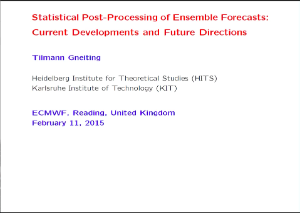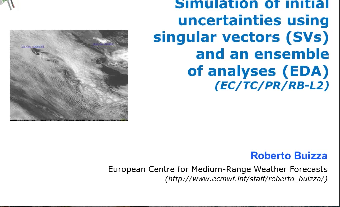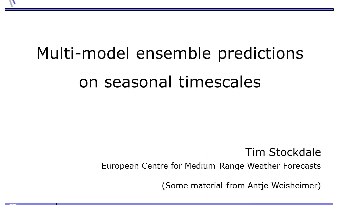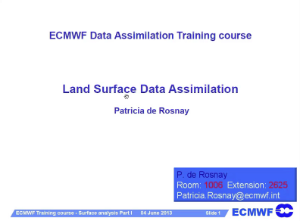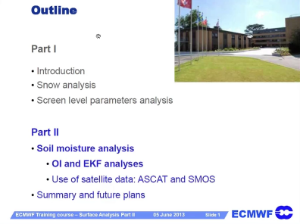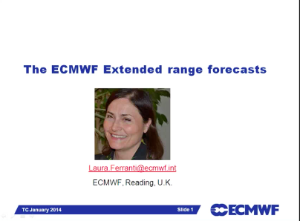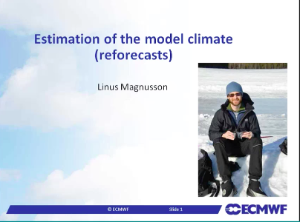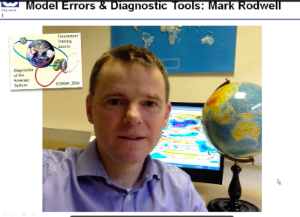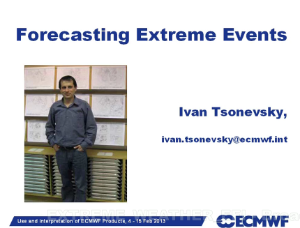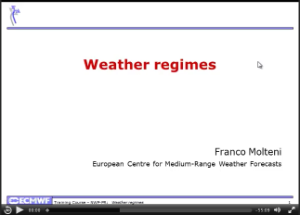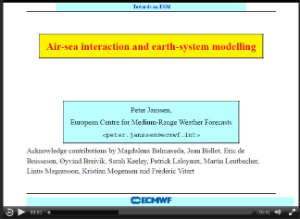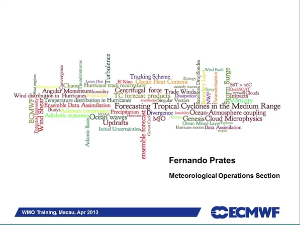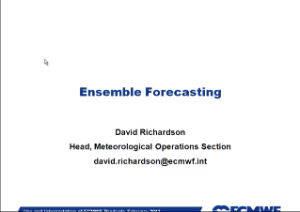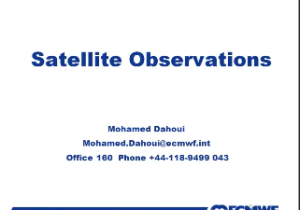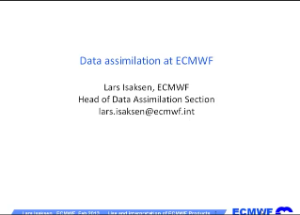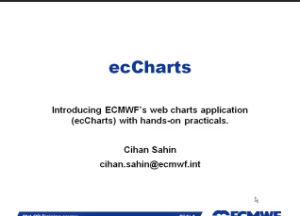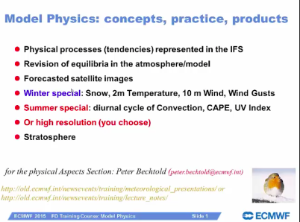You can download our resources from here:
Webinars and slidecasts are in mp4 format. Please click on the icon to get the mp4 ( if you cannot play it, please download the MP4 file by right clicking and choosing 'Save link as' . Play it locally with Windows media player, or quicktime or VLC (free software))
Lecture notes are in PDF format
Our Webinars (recordings)
Statistical post-processing of ensemble weather forecasts: Current developments and future directions (Tilmann Gneiting) - Statistical post-processing techniques serve to improve the quality of numerical weather forecasts, as they seek to generate calibrated and sharp predictive distributions of future weather quantities and events. I will review the state of the art in post-processing, with focus on ensemble forecasts and ongoing joint work between the ECMWF and the Computational Statistics group at the Heidelberg Institute for Theoretical Studies (HITS). Current and future challenges include the treatment of extreme events, and the calibration of probabilistic forecasts of combined events and spatio-temporal weather trajectories, for which discrete copula based techniques, such as ensemble copula coupling (ECC) and the Schaake shuffle, are attractive options. . Click here to download the recording.
The aim of this webinar is to introduce the ECMWF ensemble of data assimilation (EDA). The rationale and methodology of the EDA will be illustrated, and its use in to simulate initial uncertainties in the ECMWF ensemble prediction system (ENS) will be presented.This webinar was delivered by Dr. Roberto Buizza and recorded in May 2014. Click here to download the recording.
This lecture looks at calibration and multi-model ensembles from a seasonal forecasting perspective. The theoretical basis is given, followed by research results that strongly motivated a multi-model approach for these timescales. The operational EUROSIP multi-model system is described. This Webinar was delivered by Dr. Tim Stockdale and recorded in May 2014. Click here to download the recording.
Our Slidecasts (slides and audio recordings)
This lecture was delivered by Dr. Franco Molteni and recorded in May 2014. Click here to download the recording
This lecture was delivered by Dr. Franco Molteni and recorded in May 2014. Click here to download the recording
This lecture was delivered by Dr. Franco Molteni and recorded in May 2014. Click here to download the recording
Our Tutorials (videos)
ECPDS
The video explains the main architecture behind ECPDS followed by the main concepts behind it such us Destination and Host and the configurable options that they have.
Click here to see the video
The video shows how to log in to ECPDS, start and stop and check the several status of a destination.
Click here to see the video
The video explains the file filters available in ECPDS and how to see the volumes in dissemination.
Click here to see the video
Our NWP training material
